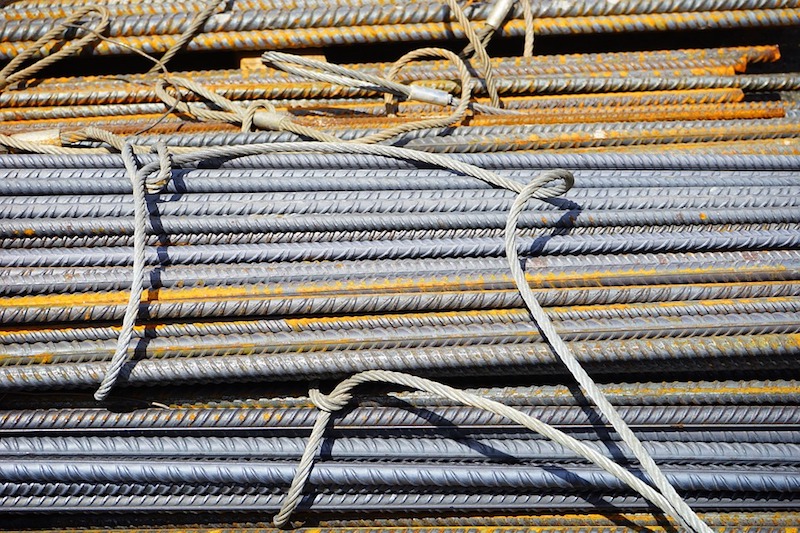When the Trump Administration imposed tariffs of 25% on steel and 10% on aluminum in March, it kicked off one of the nation’s most heated and far-reaching trade wars since the Smoot-Hawley Tariff Act of 1930. That legislation, which was expanded by President Hoover to include more than 20,000 products across the agriculture and industrial sectors, is viewed historically as an abject failure and a prime reason for the sustained economic depression through the 1930s.
Seven months into Trump’s trade war, the jury is still out. The circumstances today are markedly different than 88 years ago, of course. The economy is strong. But America is no longer the global manufacturing powerhouse it once was, and the nation has operated a global trade deficit of $100 billion or more annually since the late 1990s (last year: $795 billion).
Opponents of Trump’s actions on trade argue that the policies are outmoded, shortsighted measures that undermine a free trade economy. Pundits in Trump’s camp believe that any short-term hit to U.S. businesses is worth the potential long-term impact to the economy, particularly the manufacturing sector.
“For the last 25 years, China has been waging a trade war against the United States,” said Dan DiMicco, a senior trade adviser to President Trump’s campaign, during a talk at Metalcon last month. “A lot of us have been fighting that war, but without the resources to win it, until now.”
DiMicco should know. As the former CEO of Nucor Corp., the nation’s largest steel producer, he’s seen firsthand the power a government-controlled economy like China’s can wield. The nation is home to half of the world’s 10 largest steel production operations, and has been known to “dump cheap steel” on the world market to artificially deflate material prices, said DiMicco. More alarming, he said, is the potential threat to national security: “Our defense department says we can no longer supply parts we need for our military. You cannot be a leader of the world if you don’t have a strong manufacturing base and a strong steel industry.”
Meanwhile, the U.S. construction industry keeps humming along. Prices for aluminum- and steel-based materials have soared, but the construction sector seems to be taking it in stride. Nonresidential construction spending reached a record-high $762.7 billion in August, bolstered by a healthy backlog of work. And even when the impacts from the tariffs are factored in, construction industry economists remain largely upbeat with their forecasts for 2019 (tinyurl.com/y9qwcwln).
For now, Building Teams are finding a way to get their projects completed under increasingly onerous circumstances. Is there a tipping point when escalating costs will force developers to shelve projects? Or will prices stabilize to a “new normal” that keeps the work flowing? The answers, unfortunately, are anyone’s guess.
Related Stories
Products and Materials | Jan 31, 2024
Top building products for January 2024
BD+C Editors break down January's top 15 building products, from SloanStone Quartz Molded Sinks to InvisiWrap SA housewrap.
Sponsored | BD+C University Course | Jan 17, 2024
Waterproofing deep foundations for new construction
This continuing education course, by Walter P Moore's Amos Chan, P.E., BECxP, CxA+BE, covers design considerations for below-grade waterproofing for new construction, the types of below-grade systems available, and specific concerns associated with waterproofing deep foundations.
Sponsored | Performing Arts Centers | Jan 17, 2024
Performance-based facilities for performing arts boost the bottom line
A look at design trends for “budget-wise” performing arts facilities reveals ways in which well-planned and well-built facilities help performers and audiences get the most out of the arts. This continuing education course is worth 1.0 AIA learning unit.
Concrete | Jan 12, 2024
Sustainable concrete reduces carbon emissions by at least 30%
Designed by Holcim, a building materials supplier, ECOPact offers a sustainable concrete alternative that not only meets, but exceeds the properties of standard concrete.
Mass Timber | Jan 2, 2024
5 ways mass timber will reshape the design of life sciences facilities
Here are five reasons why it has become increasingly evident that mass timber is ready to shape the future of laboratory spaces.
75 Top Building Products | Dec 13, 2023
75 top building products for 2023
From a bladeless rooftop wind energy system, to a troffer light fixture with built-in continuous visible light disinfection, innovation is plentiful in Building Design+Construction's annual 75 Top Products report.
Products and Materials | Oct 31, 2023
Top building products for October 2023
BD+C Editors break down 15 of the top building products this month, from structural round timber to air handling units.
Building Materials | Oct 19, 2023
New white papers offer best choices in drywall, flooring, and insulation for embodied carbon and health impacts
“Embodied Carbon and Material Health in Insulation” and “Embodied Carbon and Material Health in Gypsum Drywall and Flooring,” by architecture and design firm Perkins&Will in partnership with the Healthy Building Network, advise on how to select the best low-carbon products with the least impact on human health.
Engineers | Oct 12, 2023
Building science: Considering steel sheet piles for semi-permanent or permanent subsurface water control for below-grade building spaces
For projects that do not include moisture-sensitive below-grade spaces, project teams sometimes rely on sheet piles alone for reduction of subsurface water. Experts from Simpson Gumpertz & Heger explore this sheet pile “water management wall” approach.
Building Materials | Oct 2, 2023
Purdue engineers develop intelligent architected materials
Purdue University civil engineers have developed innovative materials that can dissipate energy caused by various physical stresses without sustaining permanent damage.
















